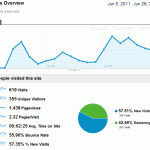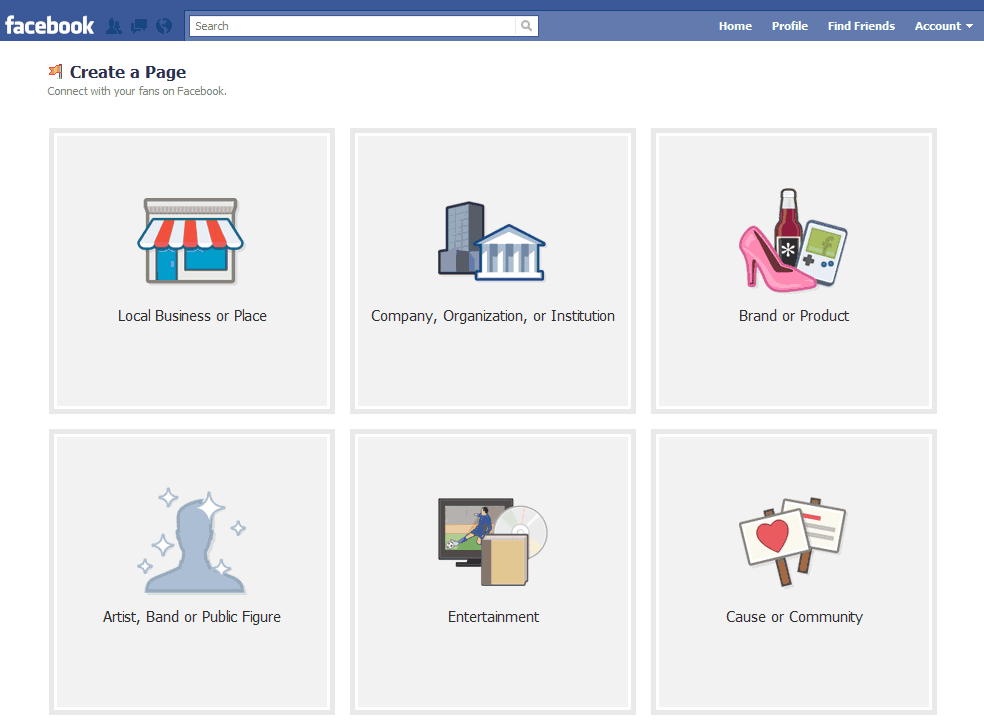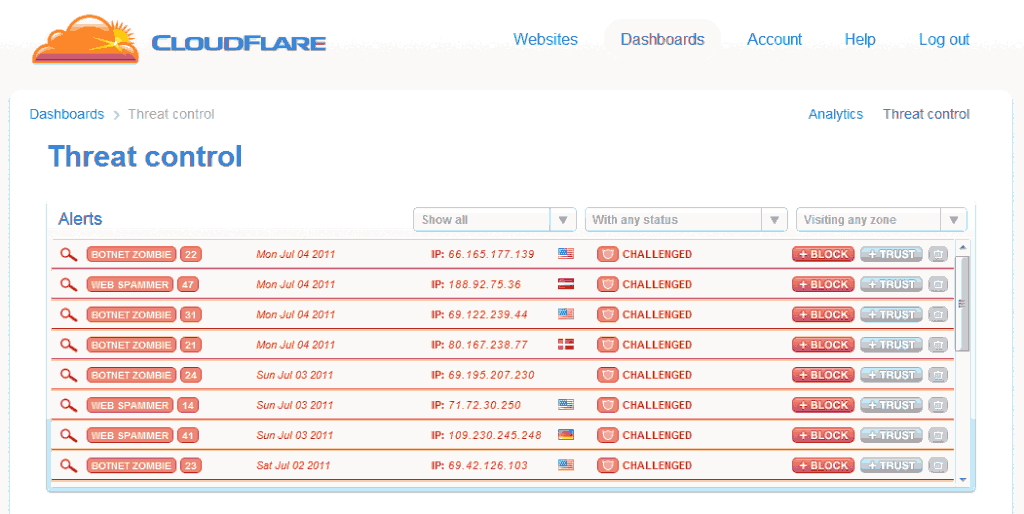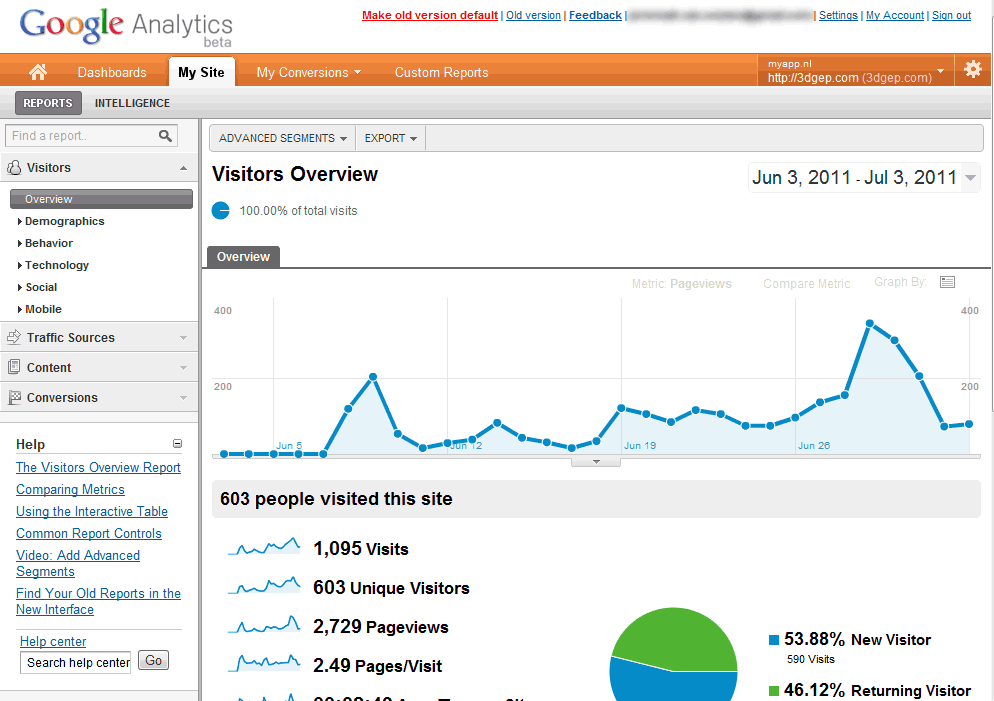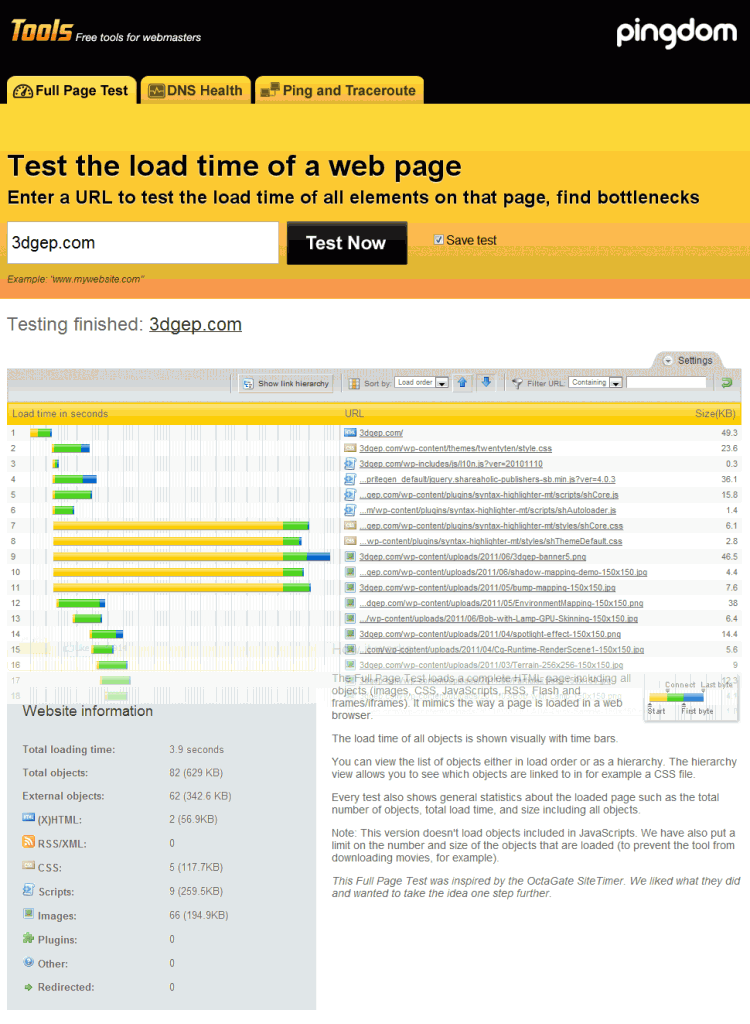In this article I will briefly summarize my own experiences while trying to maximize my website’s search engine presence. I will discuss my experience with choosing a good hosting provider, and getting a website started quickly.
I will also show how you can leverage the power of social media tools like Facebook and Twitter to further your website’s exposure.
If you decide to manage your own website then you will want to know how you can help search engines find and index your site. I will introduce a few tools that you can use on your own sites to ensure you can maximize your page rating so your website comes to the top of the search results.
If you can’t see how much interest your website is generating, then you won’t know if your hard work is paying off. I will also talk about Google’s solution to help you track your web site using Google Analytics.
Introduction
Getting your website to rank high in a search engine’s rating system is not an easy task. There are many variables to consider to optimize the page score. Fortunately there are many freely available tools to help you increase your page’s web presence so it is easier for others to find the information they are looking for.
Getting the right web host for your needs is the first step to creating your new webpage. The budget you have for your webpage will also play a role in the webhost you eventually use. In this article, I will briefly summarize my experiences with two different web hosting providers and the pros and cons of each one.
I will also very briefly introduce the Content Managment System (CMS) that I decided to use on my site to get up and running and creating great content as quickly as possible.
The CMS you decide to use for your website will also determine the tools and functionality you will have at your disposal. I will show you a few tools that I use to to optimize my page score and search engine awareness.
There is little reward if you are not sure if all of your hard work and efforts are having any effect. I will show you a few tools you can use to see if your page is performing as good as it can. I will introduce Google’s analytics tool that anybody can integrate into their own websites. I will also show you a tool that you can use to test your webpage to make sure you are achieving the highest possible page score.
Getting Started
Before you can increase your web presence, you will need to setup a website. If you are a savvy webmaster you may want to host you own website on your own servers at home or at work but if your an intermediate webmaster it may be easier to let a professional web hosting provider host your website. If you are a total noob and would rather just have everything done for you, there are also several free options available however you will have less flexability when it comes to increasing the public awareness of your site.
Building your own Web Servers
If you don’t want to pay the cost of a managed web hosting provider, there are options to hosting your own websites. For just a few hundred euros you could get a computer that is capable of delivering dynamically generated web content to the internet. Getting a domain name is also as easy as creating a free account at http://www.dyndns.com/ and choosing a free domain name. For the free version, you will have to choose a pre-defined domain name but you can choose the subdomain name. For just $15.00 per year, you can register a domain name of your choice and the DynDNS servers will automatically forward requests of your domain to your private web server.
The easiest way to setup your private web server which is capable of dynamically generating content using server-side scripting languages like PHP and a back-end database like MySQL for free is using the handy Apache distribution installer called XAMPP.
Free Web Hosting Services
Depending on what you want to do, there are also many free web hosting services that you can take advantage of.
![]() Blogger is a free blogging website where you can post blog entries or articles. You can also customize your blog’s main page to suite your styles and there are a few “gadgets” available from blogger that you can add to your page’s design that can make your site easier to navigate and use.
Blogger is a free blogging website where you can post blog entries or articles. You can also customize your blog’s main page to suite your styles and there are a few “gadgets” available from blogger that you can add to your page’s design that can make your site easier to navigate and use.
![]() Google Sites is a free website creation tool that allows you to build custom websites either from scratch or from a pre-defined template. The advantage of Google Sites is that it is very easy to get started creating content for your new website. The disadvantage is that you don’t have direct control of the managment of the site and although you can specify a name for your site, you will not be able to specify a private domain name that is used to reach this site.
Google Sites is a free website creation tool that allows you to build custom websites either from scratch or from a pre-defined template. The advantage of Google Sites is that it is very easy to get started creating content for your new website. The disadvantage is that you don’t have direct control of the managment of the site and although you can specify a name for your site, you will not be able to specify a private domain name that is used to reach this site.
![]() WordPress.com is another free blogging host provider similar to Blogger which allows you to create a blog-based website with posts and articles. The advantage of WordPress.com is that it is easy to get up and running and start adding content to your site. The disadvantage is the lack of control you have regarding the kind of add-ons or plugins you can install on your site.
WordPress.com is another free blogging host provider similar to Blogger which allows you to create a blog-based website with posts and articles. The advantage of WordPress.com is that it is easy to get up and running and start adding content to your site. The disadvantage is the lack of control you have regarding the kind of add-ons or plugins you can install on your site.
Hosting your own websites on a private web server is one end of the web hosting spectrum, while the free services provided by sites like Blogger, Google Sites, and WordPress.com would be the other end of the spectrum. Somewhere in between is Managed Shared Web Hosting.
There are many 3rd-party web hosting service providers that will store your website’s content and deliver the pages to your eager audience. This is the recommended option if you want to have control over the management of the site without the hassle of trying to maintain up-time, security, and server scaleablity.
I personally have practical experience with two such hosting providers and I will give a brief summary of my opinion of each.
One.com is a very inexpensive web hosting solution with pricing options starting as low as 1.25 EUR per month. For that price you get 3GB of storage for your website’s content, MySQL database support and PHP5 server-side scripting and some other features that allow you to setup a blog in just a few clicks as well as an online photo album so you can share your vaction pictures with your friends and family. Another advantage is that you have control over the content of your site. You can upload files directly to your website’s data storage using FTP, install your own CMS like Joomla, or WordPress, or if you want to host a PHP-MySQL driven forum site this is also possible all on your website.
One.com provides 24/7 live help using a web-chat support service so if you are having trouble trying to figure out the hostname of your database server, just click the live help button and you will have your questions answered very quickly.
However, because One.com is a shared hosting provider, it may not provide the performance of more expensive private solutions. On a few occasions, my webpage took far too long to load or completely failed to load at all but I guess this is the price you pay for cheap web hosting.
For this reason, I recently switched hosting providers from One.com to VexxHost. VexxHost is slightly more expensive than One.com but the features that they provided make it worth the extra cost.
Although VexxHost is slightly more expensive than One.com at $3.99 US per month, the additional services that they provide made the switch worth while. One of the primary reasons I choose to go with VexxHost is because they have a partnership with a Content Delivery Network (CDN) provider called CloudFlare. I will describe the benifits of taking advantage of a CDN later in this article.
Getting Up and Running
If you have chosen for the private server solution or the shared hosting service provider, you will want to start adding content to your website. The easiest way to do that is to use an existing Content Management System like Joomla or WordPress.
Joomla
Joomla is a powerful open-source Content Management System (CMS) that allows you to create articles and pages, upload video and images, allow users to contribute to the content on your website, and take advantage of add-ons to increase your sites functionality.
Although it may be able to use Joomla directly “out-of-the-box” but for Joomla to be really useful, you will want to configure your site with pages, categories, menus, and posts. For the average user, Joomla may be a little too much management and maintenance than you are willing to spend.
WordPress
WordPress is a CMS that can be installed on any web server that has support for PHP and MySQL back-end database. It is installed in just a few steps and it is easy to start adding content to your website. The management overhead for WordPress is much lower than for Joomla which makes it much more attractive for individual users but it is also powerful enough to be used by large corporations.
After reviewing both products, I’ve decided to use WordPress for my website because it is easy to setup and easy to use.
Social Media
By now, everybody has heard the term “social media”. You may immediately think of such sits as Facebook, Twitter, or Hyves. These sites allow groups of people to socialize and interact on a large scale in a non-intrusive environment (as opposed to e-mail spam).
I will focus on the two giants, Facebook and Twitter and show how we can generate more awareness to your website by using these social media platforms.
Facebook is the world’s largest social media website. Facebook allows people to easily create a web presence without having to install any software, or manage any hardware, or setup any complicated Content Management Systems.
Besides personal profiles, Facebook allow you to make pages. To create a Facebook page, simply go to http://www.facebook.com/pages and click the ![]() button at the top-right of the page. You should be presented with something similar to what is shown below.
button at the top-right of the page. You should be presented with something similar to what is shown below.
Once you have created your page, you can recommend your page to your friends and contacts, you can post on the page’s wall, post images, or videos and even create a question that you can ask your friends.
You can also create a Facebook ad for your page that will randomly appear on peoples pages depending on their interests. You can specify the demographic audience you are trying to reach and the Facebook ad system will choose the best group of people to advertise your ad to. Ad pricing varies depending on your budget and what your targets are.
You can also direct visitors from your main website to your facebook page by using a “Like Box”. The “Like Box” is a social plugin that enables Facebook Page owners to attract and gain Likes from their own websites. I’ve already added a like box to the widget frame on the right side of every page on this website, but you can also create like boxes that display more information than just a like button. Below is an example of a like box that shows the stream from the Facebook page as well as the faces of the people that have like the page.
Twitter allows you to post short message to a lot of people at the same time. I use twitter to post a tweet when new articles are available on my website. This way, anyone who is following me on twitter will be notified when new content is available.
Tools and Plugins
If you decide to use a CMS like WordPress to manage your website, then there are several plug-ins or add-ons that are available to help optimize your page’s delivery to the visitor.
Search engines will also rate a page based on several characteristics such as leveraging browser caching, minify static site content like style sheets and java script, and optimizing the order that style sheets and java script is listed in your page. You don’t have to know all of the things that a search engine uses to rate your page because luckily there are tools available that will manage these things for you.
W3 Total Cache
W3 Total Cache is a plugin available for WordPress that allows you to configure all kinds of website optimizations.
A few of the features that W3 Total Cache provides are:
- Page Cache: Page Cache will cache commonly generated web pages on your websites disc so that the content can be retrieved more quickly.
- Minify: Reduce the page load times by removing unnecessary data from style sheets, JavaScript, and HTML pages.
- Database Cache: Database caching reduces the page creation time by caching dynamically generated content like pages and posts.
- Object Cache: Object caching can further reduce the page creation process for common operations.
- CloudFlare Integration: W3 Total Cache works together with CloudFlare to further accelerate your website’s load times. I will talk more about CloudFlare later when I discuss the Content Delivery Network (CDN).
- Content Delivery Network (CDN): W3 Total Cache also works together with other CDN providers like Amazon’s CloudFront, or Microsoft’s Azure services (these services are not free).
- Browser Cache: Browser cache will reduce the server load times and decrease response time by leveraging the visitor’s web browsers file cache. This way, commonly loaded images and content will be instantly reloaded if the visitor returns to your site.
Search Engine Optimization Tools
There are several different tools available that provide Search Engine Optimization support to your website. Once such tool is called “All in One SEO Pack” which is the plugin I use on my site and the one I will discuss here.
When search engines crawl your site, it will also analyze special HTML tags called META tags that describe the content of the page. These special META tags make it possible for these search engines to get a good idea of what your page contains without having to parse and analyze the entire contents of your page.
SEO plugins like “All in One SEO Pack” allow you to specify extra information for each post that make it easy for search engines to index your site.
The “All in One SEO Pack” plugin adds a description field as well as a comma separated keywords field that you can add to every post. This extra data will be added to the HTML code in the form of META tags that allows the search engines to more intelligently index your site.
Sitemap Generator
When a search engine crawls your site, it may not be able to find all the pages you’re site offers if there are some pages that are not directly linked on your main page. To help search engines find all of the amazing content that you worked so hard to create, you can create an XML sitemap that will allow the search engines to crawl every page and post you have ever created.
The “XML-Sitemap Generator” plugin for WordPress can build this sitemap for your site that you can then submit to search engine crawlers to facilitate easier navigation of your site. I will discuss submitting the sitemap to Google in the section where I talk about Google’s webmaster’s tools.
CloudFlare CDN
CloudFlare (www.cloudflare.com) is a free Content Delivery Network (CDN) service provider that allows the content of your site to be stored on many servers around the world. When a visitor comes to visit your site, they will retrieve the content from the closest CloudFlare data center located to them. This allows your content to be delivered to the visitor very quickly and thus should decrease your site’s load times.
CloudFlare also provides enhanced security against would-be attackers by stopping access from known threat sources. CloudFlare also protects you against comment spammers by diverting potential comment spammers away from your website. You can check the number of threats that CloudFlare blocked from the Threat Control Panel (shown below).
The only requirement for using CloudFlare is that you are able to change the primary DNS servers for your website’s domain. This allows the CloudFlare servers to handle all the requests visitors make to your page. CloudFlare will deliver the static content that it has cached on it’s own data centers located all over the world but dynamic content will still be handled by your web host provider.
Checking your Sites Performance
Now that you have your website all setup and working with all your favorite SEO tools, you may want to check how well your site performs and how much traffic is being directed to your page.
There are a few additional tools that operate external from your own site that you can use to measure and quantify your websites performance and visitor traffic.
Google Analytics
Using a little bit of JavaScript code, you can leverage the power of Google Analytics to track the visitor traffic to your website.
Google Analytics provides all kinds of metrics such as the number of visits to your website, how many times your page was viewed, where your visitors are coming from, how much time they spend on your site, how many pages have been viewed, and what your top content is.
Google Webmaster Tools
Google Webmaster tools allows you to submit your web site’s XML sitemap so that the Google search crawler can create a better view of your site.
Google Webmaster tools also shows how the Google search robots view your site and how it is presented to users who search for specific keywords that are contained in your page.
You can use the webmaster tools to ensure that the correct keywords are being used to generate clicks to the correct pages in your website.
Page Speed Online
Page Speed Online is a tool from Google Labs that you can use to analyze the performance of any domain. Page Speed Online will analyze the content of the webpage and give suggestions as to how you can improve the load time of the page as well as providing better website conformance so that it is rated higher for Google searches.
Page Speed Online will check several rules and provide suggestions as to how you could implement those rules.
A few rules checked by Page Speed Online include:
- Optimize the order of styles and scripts: correctly order external stylesheets and scripts enables better parallelization of downloads and speeds up browser rendering time.
- Inline Small JavaScript files: By inlining small JavaScript files into the main HTML page reduces round-trip-times and impoves page loading time.
- Minify CSS, JavaScript, and HTML: Stripping unnecessary comments and rules from stylesheets, JavaScript, and HTML can reduce the download size of these assets and improve page load times.
- Leverage Browser Caching: Setting an expiry date or a maximum age for static content in the HTTP headers allows instructs the browser to load previously downloaded content from the local disk rather than sending this content over the network every time it is requested.
Page Speed Online will check more rules than what I have listed here, but these are some of the rules that come up when I do a page speed test on my own domain.
Pingdom Tools
Pingdom Tools is another free online tool that you can use to measure the load times of your pages.
Conclusion
So I hope that I have been able to provide a small sample of information that will help you to get your website up and running and start drawing in those visitors.

